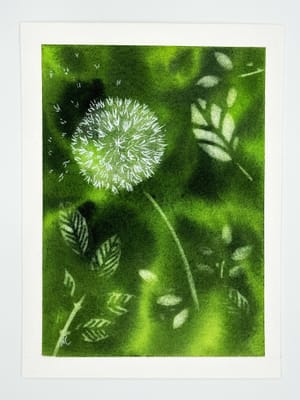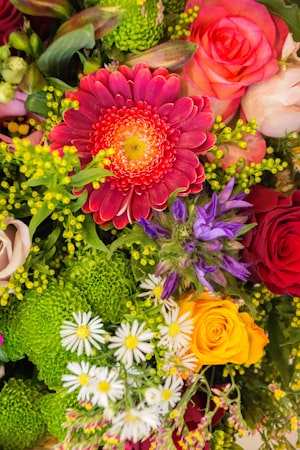Are you ready to dip your brush into the mesmerizing world of watercolor painting? With so many options available, it can be overwhelming to choose the right supplies for your artistic journey. But fear not, for I am here to simplify the process and help you save money along the way. In this comprehensive guide, I will provide you with a clear and concise overview of the basic watercolor supplies you need to get started. So, let's dive in!
Paper: The Foundation of Your Artistic Expression
When it comes to watercolor paper, investing in quality brands can make a significant difference in your painting experience. While mid-priced reputable brands like Stonehenge and Fabriano offer decent options, the crème de la crème of watercolor paper is undoubtedly Arches. If your budget permits, opting for Arches paper will reward you with less frustration, more rewarding outcomes, and faster progress.
Mid range options:

Stonehenge Aqua cold pressed 140lb: https://amzn.to/34nGk3U

Fabriano cold pressed 140 10 x 14: https://amzn.to/3q7j42y
High end option:

Arches Paper 140 cold pressed: 9x12 https://amzn.to/3z0dhP3
Weight: Striking the Perfect Balance
Watercolor paper comes in different weights, each catering to specific techniques and preferences. For beginners, I recommend starting with 140 lb paper, which is the most popular choice. This weight strikes a balance between durability and absorbency, allowing you to explore various painting styles and safe money.
There are three popular weights:90 lb: DON'T EVEN BOTHER
140 lb: Most popular
300 lb: Great for multilayer (highest in absorbency)
Texture: Embrace the Grain
Watercolor paper texture plays a crucial role in how your paint interacts with the surface. For beginners, cold-pressed paper is your best friend. This texture offers a forgiving toothy surface, ideal for exploring different subject matters. Hot-pressed paper, on the other hand, is smoother and better suited for intricate, detailed work like botanical illustrations. However, it can be less forgiving and challenging for beginners. Rough-pressed paper, with its textured and absorbent surface, shines when capturing the essence of animals and landscapes.
Size: Tailor-Made to Suit Your Vision
Watercolor paper comes in various sizes, but for beginners, I suggest starting with 8x10 or 9x12 sheets. These sizes can be easily cut down into smaller project sizes, saving you money while allowing you to explore and experiment with different subjects and compositions.
Pads vs Blocks: Freedom vs Convenience
The two most common and readily available forms are pads and blocks. Pads consist of loose sheets held together on one side, enabling you to cut them down to size or tape them to a board for stability while painting. They are less expensive and offer flexibility. Blocks, on the other hand, come with paper glued down on all four sides. This ensures the paper dries smoothly without buckling, providing a more convenient painting experience. However, blocks tend to be pricier. Depending on your preference and budget, choose the option that suits your needs best.
Paint: Unleashing the Colors of Your Imagination
Watercolor paints come in tubes or pans, and each has its own advantages. Pans are convenient for travel and come with a built-in palette. However, they can be more challenging to mix with water and may wear down your brushes more quickly. Moreover, pans often lack the vibrant pigment saturation found in tube paints. Tubes, on the other hand, offer excellent vibrancy, easy water mixing, and require minimal scrubbing. Although you'll need to purchase a palette separately, plastic palettes are affordable and get the job done. Start with artist-grade watercolor paints, focusing on a small selection of basic colors to avoid overwhelming yourself.
Start small, buy the smaller size tubes and get the basic colors I recommend:
Cool primary Colors:

Phthalo Blue Red Shade: https://amzn.to/3sCHrqK

Quinacridone Red: https://amzn.to/3Fu9kos

Lemon Yellow: https://amzn.to/3JwOBCO
Warm Primary Colors:

French Ultramarine: https://amzn.to/31j6oMB

Pyrrol Scarlet: https://amzn.to/3pM83DP

Gamboge Nova: https://amzn.to/3zriEaw
Also, pick up:

Burnt Sienna: https://amzn.to/3qvZSuC

Neutral Tint: https://amzn.to/3H9puE6
Or just get this great starter pack from amazon small 5ml tubes to see if you like it :)

Starter pack: https://amzn.to/3FQ4l1l
Essential Brushes: Nurturing Your Creative Strokes
Investing in a few high-quality brushes is essential for your watercolor journey. Look for brushes that do not shed, hold a point, and have good water-holding capacity for smooth strokes. Princeton and Escoda are reliable brands to consider. As a beginner, you only need 3 to 4 brushes to start.
- You'll need a small round detail brush like a size 2.
- You'll need a medium round brush like a size 8.
- You'll need a flat 3/4 inch brush.
That is basically it. If your budget allows for it I would say a script liner brush is a great addition for painting landscapes and animals.

Neptune pack: https://amzn.to/349qycR

Aqua Elite Pack: https://amzn.to/3pMaypx

Black Velvet Silver Series: https://amzn.to/33MzDbk
Pallets: Mixing Colors with Ease
When selecting a palette, avoid those with deep wells. They may look cute but are often impractical. Opt for a palette that offers flat areas for easy color mixing. This will enable you to explore different color combinations and achieve the desired shades and tones in your paintings.

Get a palette that has flat areas for mixing colors:

Pallete: https://amzn.to/3ekvnlA
Additional Supplies: Completing Your Toolkit
- Masking tape or washi tape: Useful for securing your paper to a surface while painting to help paper warping.
- Paper towels: Essential for blotting excess water or paint.
- Glass jar or cup: To hold water for rinsing your brushes.
- Pencil and eraser: For sketching out your compostion before diving into painting.
- Firm artist medium size clipboard or a desk:Provides stability and a flat surface for taping down your paper.
With this comprehensive guide, you now have a solid foundation to embark on your watercolor journey. Remember, practice and experimentation are key to honing your skills and finding your artistic voice. Stay tuned for future blog posts where I'll delve into each of these supplies in more detail, helping you expand your knowledge and elevate your watercolor techniques. So grab your brushes, unleash your creativity, and let the captivating world of watercolor painting unfold before you!
Websites such as www.cheapjoes.com, www.dickblick.com, or www.amazon.com are great for supplies.




